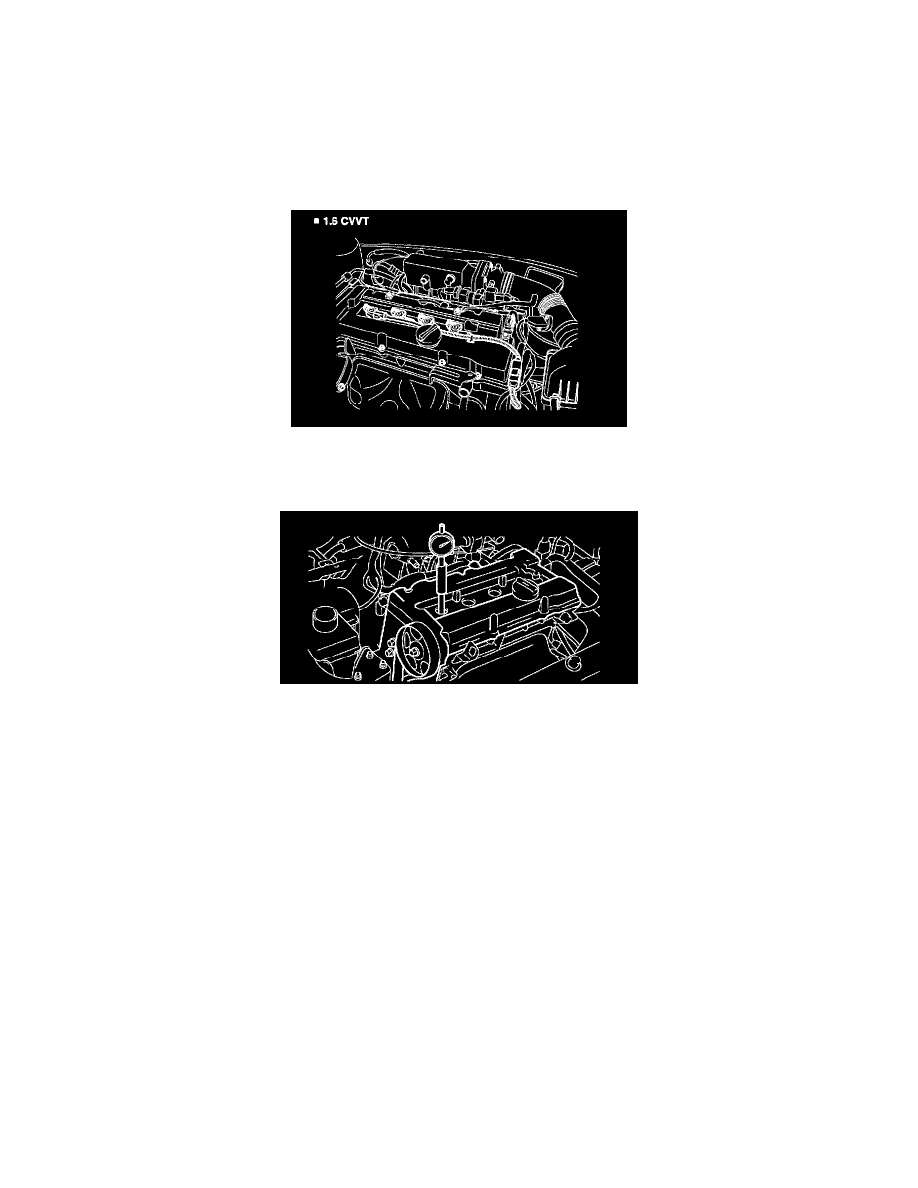Rio5 L4-1.6L (2006)

Compression Check: Testing and Inspection
COMPRESSION PRESSURE
INSPECTION
NOTE: If the there is lack of power, excessive oil consumption or poor fuel economy, measure the compression pressure.
1. Warm up and stop engine.
Allow the engine to warm up to normal operating temperature.
2. Disconnect the ignition coil connectors and the spark plug cables.
3. Remove the spark plugs. Using a 16 mm plug wrench, remove the 4 spark plugs.
4. Check the cylinder compression pressure.
1) Insert a compression gauge into the spark plug hole.
2) Fully open the throttle.
3) While cranking the engine, measure the compression pressure.
NOTE: Always use a fully charged battery to obtain engine speed of 250 rpm or more.
4) Repeat step 1) through 3) for each cylinder.
NOTE: This measurement must be done in as short a time as possible.
Compression pressure (1.6 CVVT)
Standard: 1,422 kPa (14.5 kg/cm2, 206 psi) (250 - 400 rpm)
Minimum: 1,275 kPa (13.0 kg/cm2, 185 psi)
Difference between each cylinder: 98 kPa (1.0 kg/cm2, 14 psi) or less
5) If the cylinder compression in 1 or more cylinders is low, pour a small amount of engine oil into the cylinder through the spark plug hole and
repeat step 1) through 3) for cylinders with low compression.
^
If adding oil helps the compression, it is likely that the piston rings and/or cylinder bore are worn or damaged.
^
If pressure stays low, a valve may be sticking or seating is improper, or there may be leakage past the gasket.
5. Reinstall the spark plugs.
6. Connect the ignition coil connectors and the spark plug cables.
